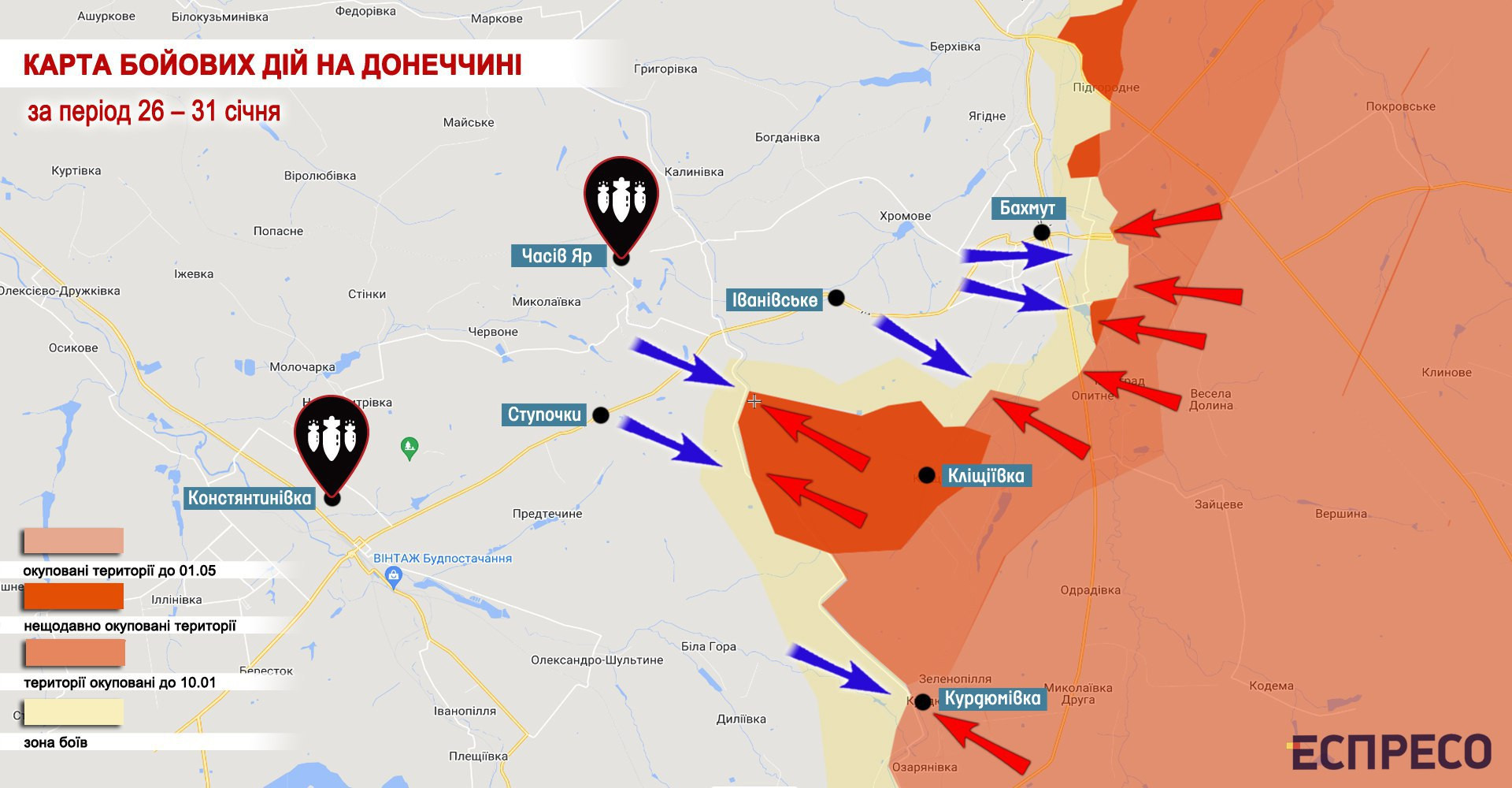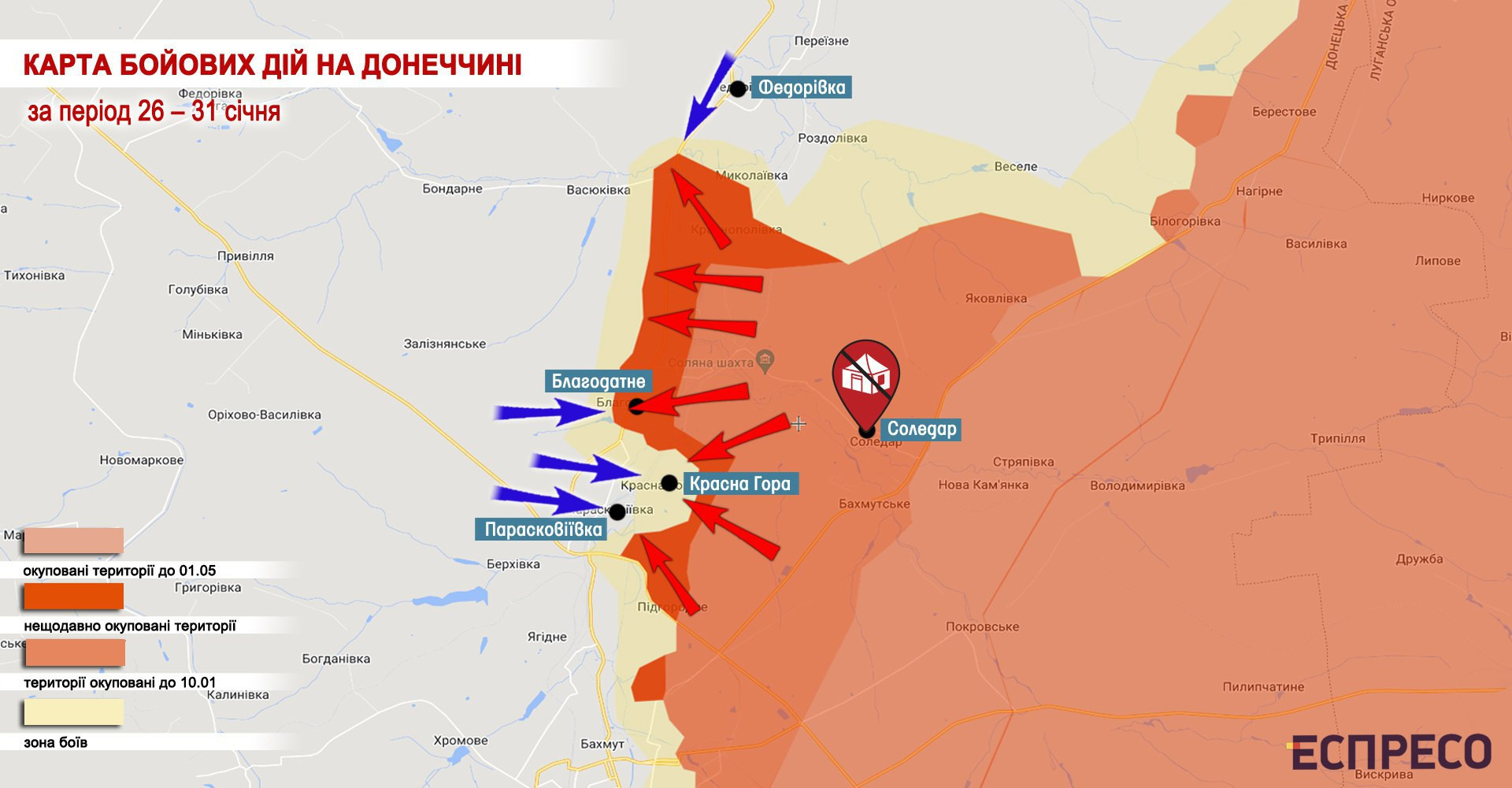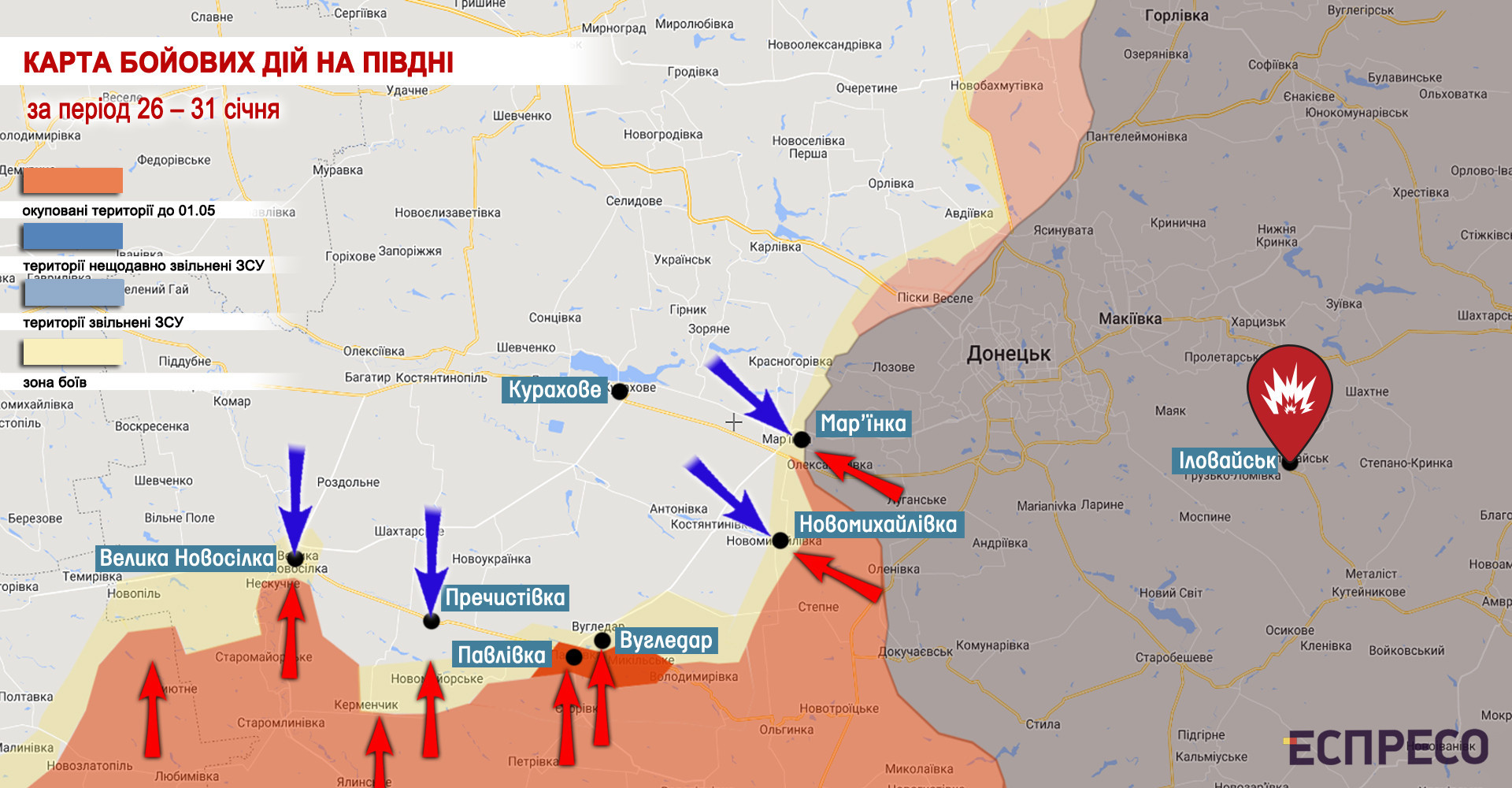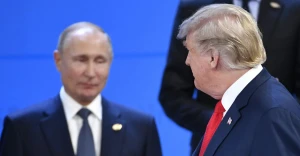
Russian forces try to push Ukrainian defenses around Bakhmut and Vuhledar despite heavy losses - military expert Serhiy Zgurets
The situation at the front is difficult, but the most active actions will take place in February and March
Probable directions of the enemy's new offensive
Ukraine is in the most active phase of the war with Russia, which will begin in two months. This was stated by the leadership of Ukraine's Main Intelligence Directorate, in particular Andriy Yusov, who said on February 1 that the situation at the front was difficult, but that the most active actions would take place in February and March. When we talk about the difficult situation at the front, we mention the Lyman direction, the situation around Bakhmut and Vuhledar.

These are the areas where the enemy, having accumulated additional strength, is trying to push our defense despite its own losses. This is a sign of the current situation, where neglecting losses is the enemy's attempt to influence our defense line and expect new replenishment.

Kyiv direction and northern Ukraine
Yevhen Dykyi, a civic activist, former platoon commander of the Aidar battalion and head of the National Antarctic Research Center, noted that we remember well how the events developed last spring, when the enemy entered with cadre units, contractors and officers. At that time, the numerical ratio in some areas, in the north, was twelve to one, not in our favor. But at the same time, it was in the north that we were able to inflict the most effective losses on the enemy. To put them in a position where within five weeks of the invasion, they had to make a 'gesture of goodwill', that is, flee the northern regions of Ukraine. What would have happened if they had tried to implement their slogan 'if necessary, we can repeat it'?
To begin with, with whom would they repeat it? They would repeat it with freshly mobilized people who have had minimal training. They would lack non-commissioned officers (NCOs) and officers who would somehow structure them and make them look at least a little bit like an army. The enemy has nowhere to get new experienced NCOs and officers. Private soldiers can be recruited through mobilization and from prisons, as Prigozhin is doing now. But the entire officer corps has already been deployed to the front, so you can't get much out of them. And there are none left in the reserves.
So, much less well-trained soldiers, with worse equipment and ammunition than then, would have gone into a place where they were already expected. We have already drawn conclusions from last spring. And the Ukrainian Armed Forces are of a different quality than before the start of the full-scale war. The fate of this enemy contingent would have been certain. It is not a fact that this contingent would have existed even for the five weeks it did last spring. This contingent would have run out very quickly, and a 'domino effect' would have begun. When there would be an exemplary defeat somewhere, relatively speaking, near Kyiv or in the Volyn region, where the enemy was making plans to attack Sarny and cut off western Ukraine from central Ukraine. Even the Wehrmacht was unable to enter these forest and swamp partisan lands in Sarny.
It seems that the Russians have begun to assess their capabilities more soberly and will not give us such a gift, and will not attempt to attack Kyiv and Kharkiv again. It seems that they already have a maximum plan, the so-called large encirclement on the left bank of the Dnipro River. In other words, it is not even a strike on Kharkiv, but a strike past Kharkiv to the Poltava region and to meet up with Zaporizhzhia from the south. But the more time passes, the more this plan looks unrealistic.
Heroic defense of Soledar and Bakhmut
Yevhen Dykyi believes that the enemy is left with a slow, asphalt-roller-like crawl in Donbas. And this is actually the most difficult scenario for us, because the Russians have shown that they can do it. The enemy knows how to use its only surplus resource, that's manpower, and it does not spare it. The Russians literally covered Soledar with their corpses, and this is not a literary image, but a description of the landscape that is now there. However, they pushed our defenders out of there, took Soledar, and thus jeopardized one of the two routes that supply the Bakhmut garrison. The Russians are now not trying to storm Bakhmut head-on, as they did for four months with absolutely no success, but are trying to go around it from the other side through Klishchiivka, and, unfortunately, seem to have achieved some success. Next to it is a second highway that supplies the Bakhmut garrison. If they cut both of these routes, then we will have to leave Bakhmut ourselves, without waiting for the encirclement.
The former platoon commander of the Aidar battalion noted that as a result of these events, three large frontline settlements will become frontline: Slovyansk, Kramatorsk and Kostiantynivka. The other thing is that the enemy can be held for a very long time, no less than Bakhmut. These settlements are a huge urban agglomeration that the enemy can storm for three years. This is not the most pleasant scenario, as three more cities will be on the line of fire and civilians will have to be evacuated. But this is nothing more than that, because the frontline is not collapsing, and even the Russians' political goal of reaching the border of the Donetsk region is not getting closer. Apparently, the enemy has a political order to show that it is still capable of seizing cities. And the good news is that, as the example of Soledar and now Vuhledar showed, the enemy is capable of exerting powerful pressure with a mobilized one-time mass on only one section of the frontline at a time. Please note that while the Russian forces were taking Soledar, they were actually standing along the entire frontline and only repelling our attacks.

They took Soledar, stopped and are now putting pressure on Vuhledar, meaning they don't have the resources to put so much pressure along the entire front. They are concentrating on one area in turn. This enemy pressure is difficult to resist, especially in dense buildings, because there is infantry on infantry, there is no technical advantage. Accordingly, there are only people to oppose, which means that losses are quite significant not only on the other side. The good thing is that the enemy can only advance locally, and during this time we will get the necessary equipment, a wave of mobilization, and new brigades and reserves. We are actually getting this time thanks to the heroism of the defenders of Soledar, Bakhmut, and the Avdiivka industrial zone.
- News











































